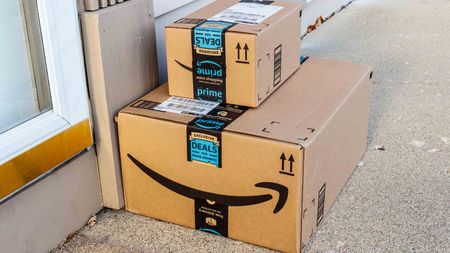Maryland on the Fast Track
The turtle is on the move.

Over the past few years, the University of Maryland at College Park has made its way with tortoise-like tenacity (and hare-like speed) into our top ten, jumping from number 28 in February 2008 to number 8 in 2010. This flagship institution, known for its engineering, journalism and computer-science programs (and, of course, its terrapin mascot), has risen to the top by keeping in-state costs virtually unchanged while improving on quality, especially in its graduation rates.
That success comes largely from an ongoing campaign to reduce waste and boost efficiency, including the efficiency with which students collect a degree. The university spends thousands more than it charges to educate in-staters, says President Dan Mote, making perennial students costly to both their parents and the university. “It’s a lose-lose situation,” says Mote. To keep the kids on track, the university has boosted counseling, encouraged students to settle on a major and insisted that they take full course loads. Says Mote, “We told them that it’s time to achieve.”
Maryland has also invited faculty and students to come up with innovative ways to get and give more bang for the buck. For instance, last year the Department of Family Science began offering some summer classes online, enabling more students to enroll in the popular program while increasing revenue. The combined efforts, along with strong state support, have allowed Maryland to increase enrollment and maintain an in-state tuition freeze for four years running.

Sign up for Kiplinger’s Free E-Newsletters
Profit and prosper with the best of expert advice on investing, taxes, retirement, personal finance and more - straight to your e-mail.
Profit and prosper with the best of expert advice - straight to your e-mail.
Maryland has also mustered the money for financial aid despite a 12% increase in applications over last year and an explosion in aid-package appeals over the past few years. “Historically, we have about 300 appeals in one year,” says Sarah Bauder, director of financial aid. “Last year we had 1,100 for the whole year. This year we have 1,700, and we still have months to go.” The amount of need has increased as well, says Bauder. “We usually bridge the gap between family resources and cost. Now, rather than bridging the gap, we’re the resource.”
Maryland provides need-based financial aid -- a mix of federal and institutional grants and loans -- to 50% of its students. It also administers Keep Me Maryland, a program funded by donors that helps students whose financial need puts them in jeopardy of leaving school. And the financial-aid office encourages applicants to consider community college as a lower-cost option. “Students who wanted to go to a four-year public school are now going to community college and transferring back in,” says Bauder.
Julius Suku, a Liberian refugee who immigrated to the U.S. in 2003, hoped to attend Maryland from the get-go. Instead, he started at Prince George’s Community College, where tuition and fees run about $4,000 for county residents, compared with Maryland’s $8,005.
“I came to America with an empty pocket,” says Suku. “At P.G. Community College, I didn’t even take a loan. I graduated with zero owed to anybody.” After transferring to the University of Maryland, however, he found himself stretched to the limit, even with financial aid and a full-time job. “I was going to have to drop out.”
UM’s response? Keep Me Maryland, which helped cover Suku’s last two semesters. Suku credits that program, and the donors who fund it, with getting him across the finish line. “I want to meet these people who made me a graduate. I want to have coffee with them and tell them how they changed this refugee’s life.”
Get Kiplinger Today newsletter — free
Profit and prosper with the best of Kiplinger's advice on investing, taxes, retirement, personal finance and much more. Delivered daily. Enter your email in the box and click Sign Me Up.

-
 Stock Market Today: Dow Rises 854 Points From Its Intraday Low
Stock Market Today: Dow Rises 854 Points From Its Intraday LowIf there's one thing markets hate, it's uncertainty. But uncertainty is all they're getting these days.
By David Dittman Published
-
 Are You a Retirement Millionaire Too Scared To Spend?
Are You a Retirement Millionaire Too Scared To Spend?If you are too scared to spend money in retirement, you may be saddled with regret. Here are three ways to safely enjoy your sizable retirement nest egg.
By Donna Fuscaldo Published
-
 Roth IRA Contribution Limits for 2025
Roth IRA Contribution Limits for 2025Roth IRAs Roth IRA contribution limits have gone up. Here's what you need to know.
By Jackie Stewart Last updated
-
 Four Tips for Renting Out Your Home on Airbnb
Four Tips for Renting Out Your Home on Airbnbreal estate Here's what you should know before listing your home on Airbnb.
By Miriam Cross Published
-
 Five Ways to a Cheap Last-Minute Vacation
Five Ways to a Cheap Last-Minute VacationTravel It is possible to pull off a cheap last-minute vacation. Here are some tips to make it happen.
By Vaishali Varu Last updated
-
 How to Figure Out How Much Life Insurance You Need
How to Figure Out How Much Life Insurance You Needinsurance Instead of relying on rules of thumb, you’re better off taking a systematic approach to figuring your life insurance needs.
By Kimberly Lankford Last updated
-
 Amazon Big Deal Days Is Coming! We’ve Got All the Details
Amazon Big Deal Days Is Coming! We’ve Got All the DetailsAmazon Prime To kick off the holiday season with a bang, Amazon Big Deal Days runs Tuesday, October 8 and Wednesday, October 9.
By Bob Niedt Last updated
-
 How to Shop for Life Insurance in 3 Easy Steps
How to Shop for Life Insurance in 3 Easy Stepsinsurance Shopping for life insurance? You may be able to estimate how much you need online, but that's just the start of your search.
By Kaitlin Pitsker Last updated
-
 Five Ways to Shop for a Low Mortgage Rate
Five Ways to Shop for a Low Mortgage RateBecoming a Homeowner Mortgage rates are high this year, but you can still find an affordable loan with these tips.
By Daniel Bortz Last updated
-
 Retirees, It's Not Too Late to Buy Life Insurance
Retirees, It's Not Too Late to Buy Life Insurancelife insurance Improvements in underwriting have made it easier to qualify for life insurance, which can be a useful estate-planning tool.
By David Rodeck Published